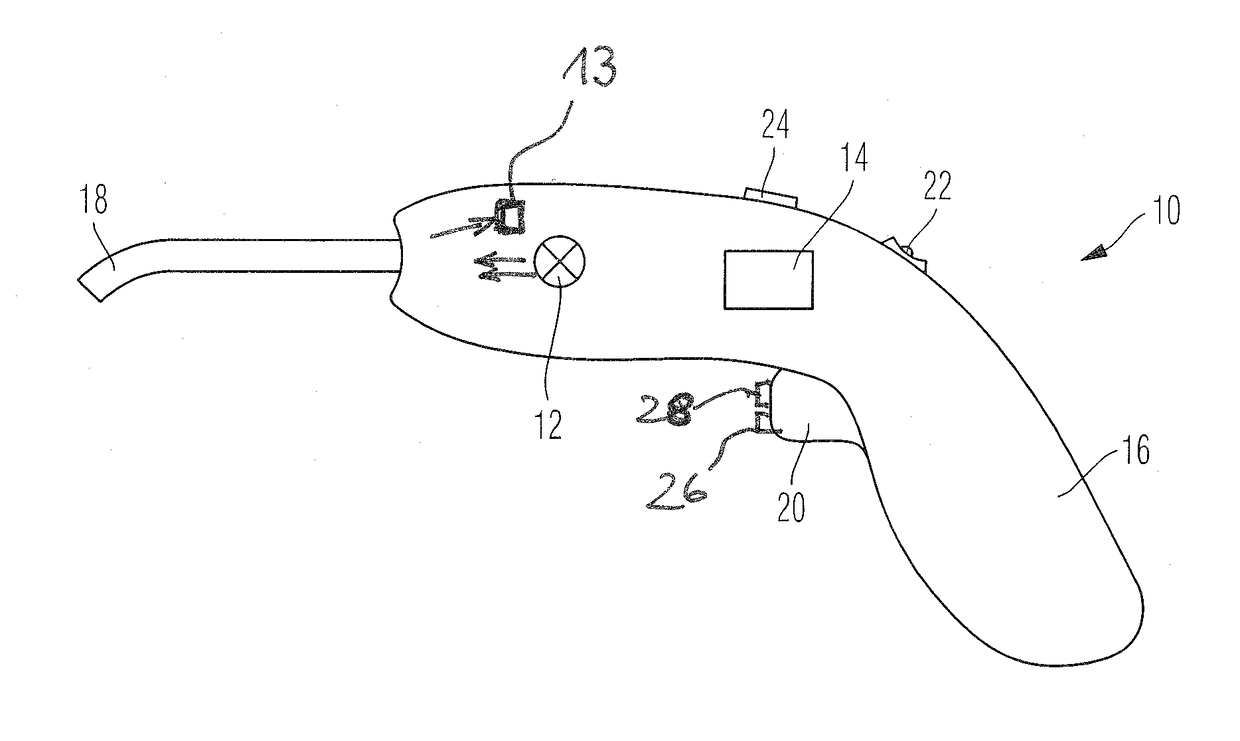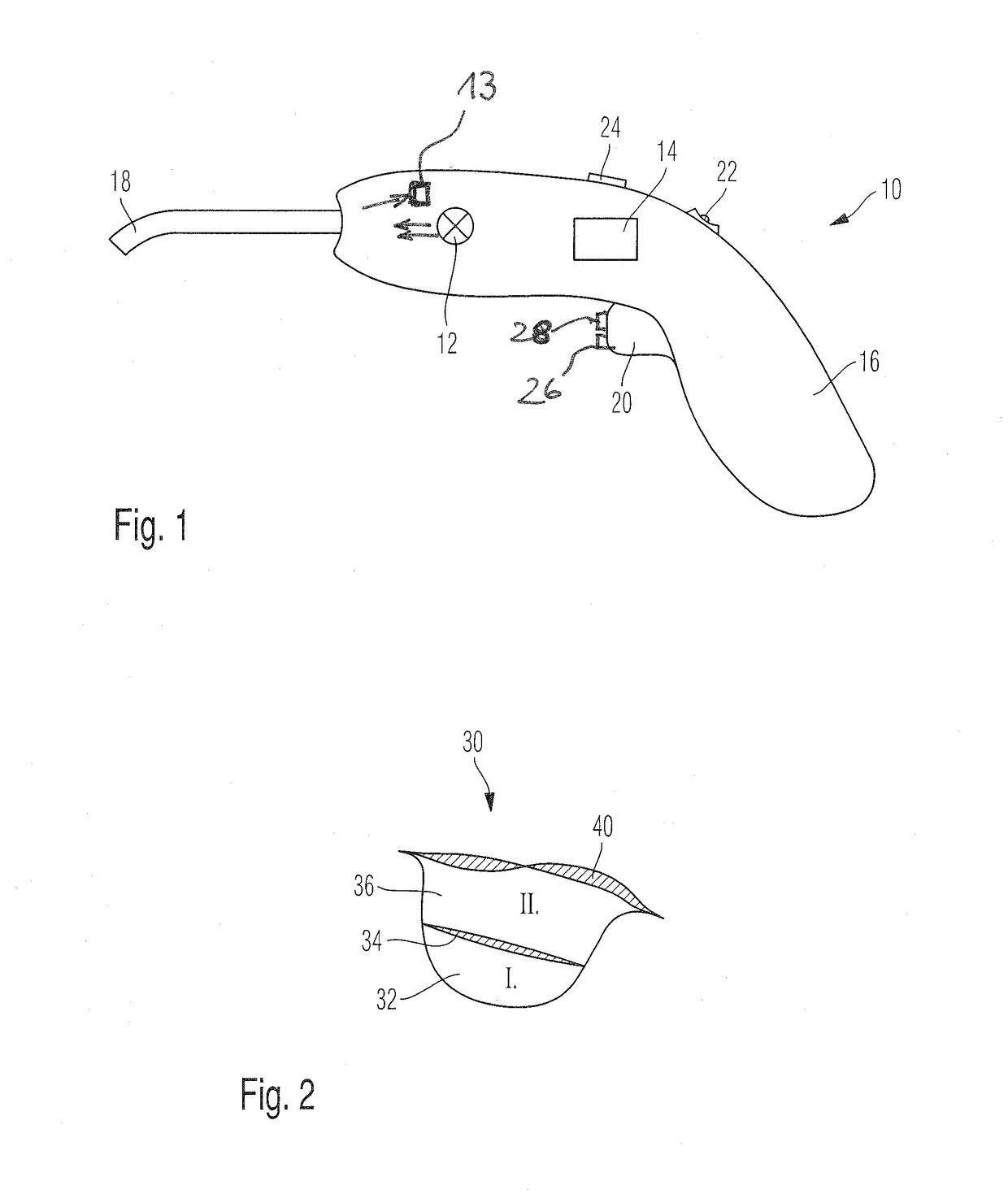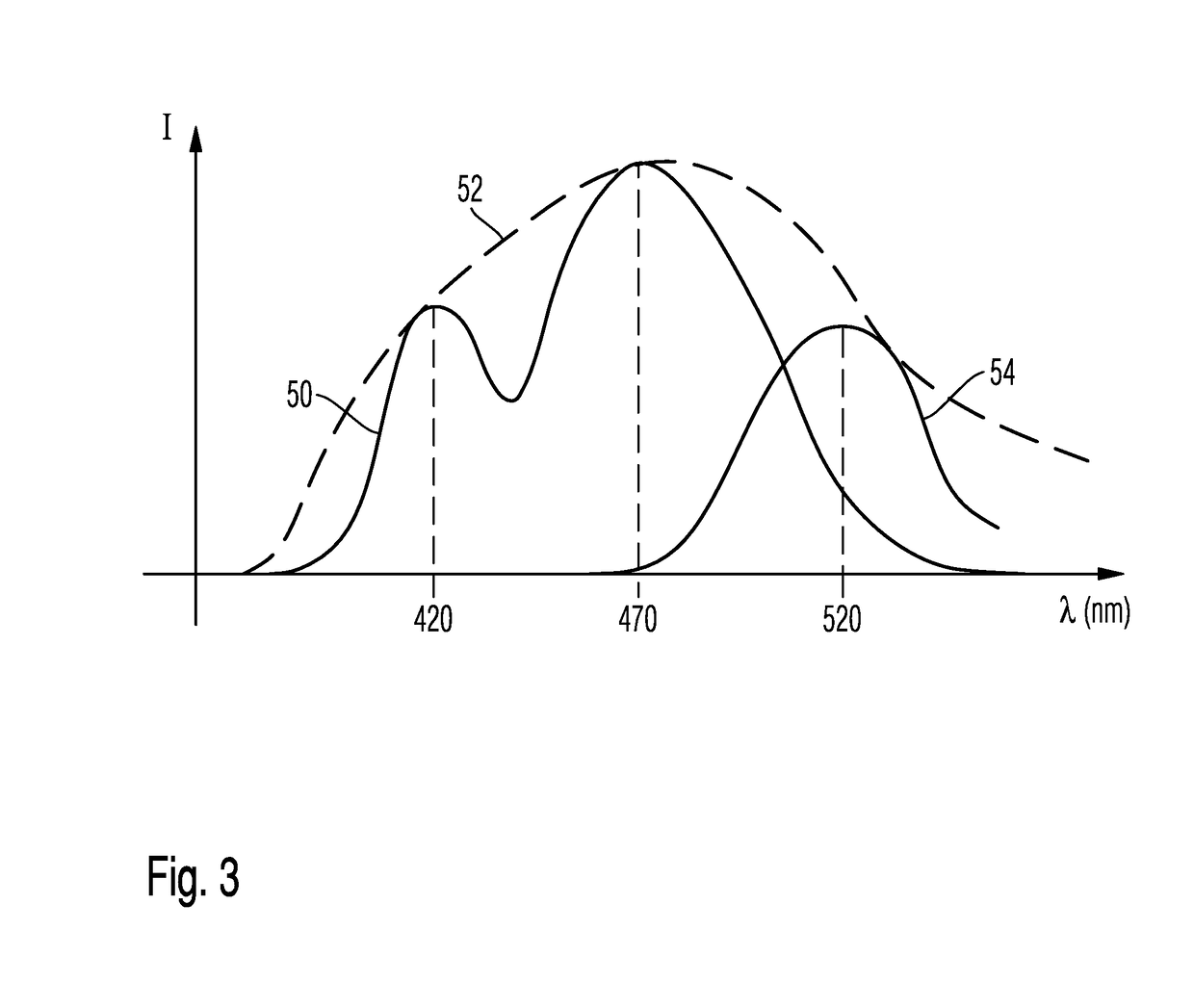Light curing device for dental restoration materials and method of curing dental restoration materials
a technology of light curing and dental restoration, which is applied in dental prosthetics, dental surgery, medical science, etc., can solve the problems of unfavorable patient comfort, unfavorable patient comfort, and inability to reduce the main curing time, so as to prevent full hardening
- Summary
- Abstract
- Description
- Claims
- Application Information
AI Technical Summary
Benefits of technology
Problems solved by technology
Method used
Image
Examples
Embodiment Construction
[0040]The light curing device 10 illustrated in FIG. 1 comprises a light source 12, a sensor 13, and a control device 14 which are received in a pistol-shaped housing 16 in a way known per se.
[0041]A light-conducting rod 18 projects from the front side of the housing 16 of the light curing device 10 which light-conducting rod is cranked or bent in a way known per se at its distal end in order to allow for light exposure even from sites which are difficult to access.
[0042]The inventive light curing device comprises an actuation element 20 which has a dual function in the exemplary embodiment illustrated. Actuation element 20 includes button 26 which can be used to activate a desired curing mode, and a control button 28 which can be used to adjust a mode or a program of the light curing device (10). In this example it is located at a position at which the trigger of a pistol would be arranged. By pressing on and thus actuating the actuation element with the help of the user's index fi...
PUM
 Login to View More
Login to View More Abstract
Description
Claims
Application Information
 Login to View More
Login to View More - R&D
- Intellectual Property
- Life Sciences
- Materials
- Tech Scout
- Unparalleled Data Quality
- Higher Quality Content
- 60% Fewer Hallucinations
Browse by: Latest US Patents, China's latest patents, Technical Efficacy Thesaurus, Application Domain, Technology Topic, Popular Technical Reports.
© 2025 PatSnap. All rights reserved.Legal|Privacy policy|Modern Slavery Act Transparency Statement|Sitemap|About US| Contact US: help@patsnap.com



